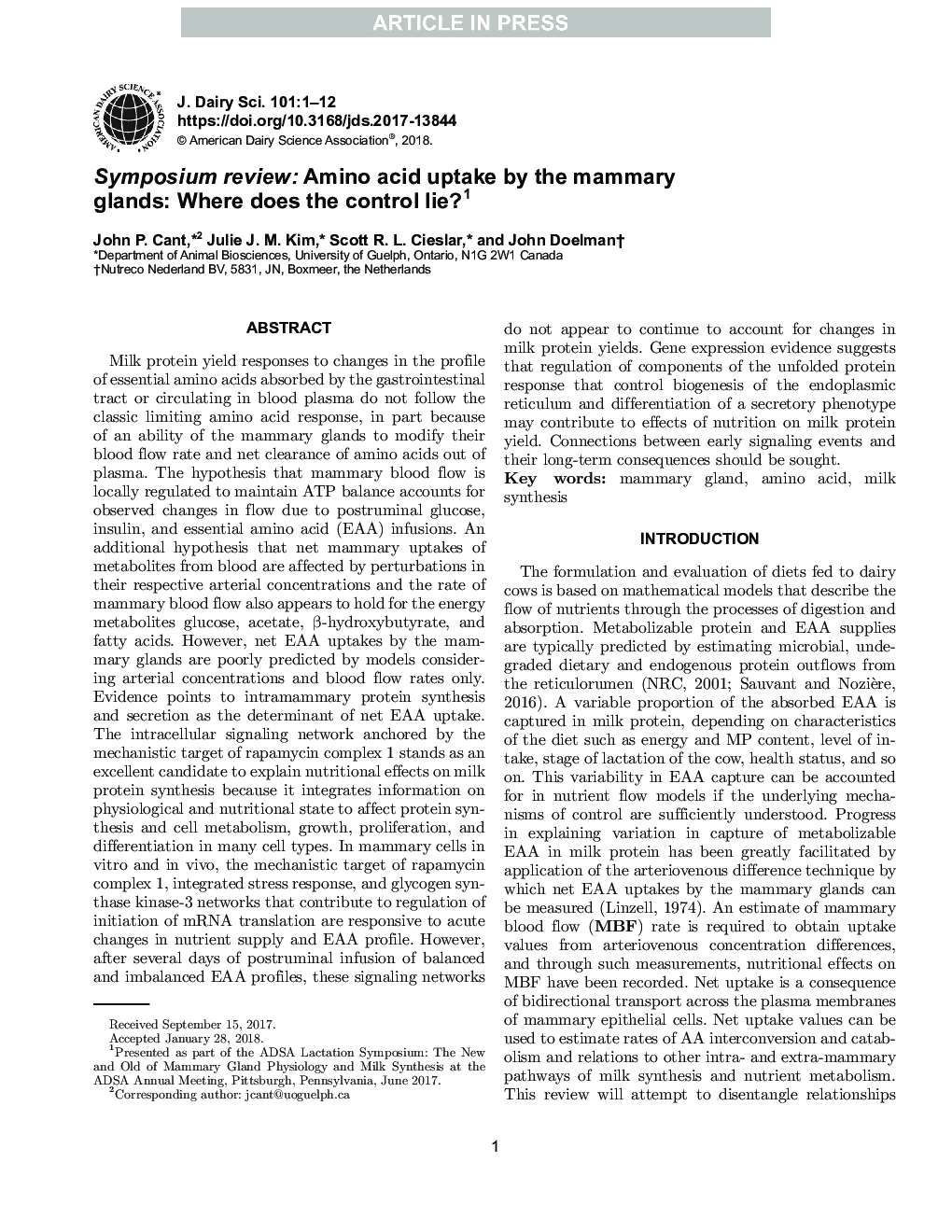| کد مقاله | کد نشریه | سال انتشار | مقاله انگلیسی | نسخه تمام متن |
|---|---|---|---|---|
| 8501234 | 1553839 | 2018 | 12 صفحه PDF | دانلود رایگان |
عنوان انگلیسی مقاله ISI
Symposium review: Amino acid uptake by the mammary glands: Where does the control lie?1
ترجمه فارسی عنوان
بررسی سمپوزیوم: جذب اسید آمینه توسط غدد پستان: کنترل کجاست؟
دانلود مقاله + سفارش ترجمه
دانلود مقاله ISI انگلیسی
رایگان برای ایرانیان
کلمات کلیدی
غده پستانی، آمینو اسید، سنتز شیر
موضوعات مرتبط
علوم زیستی و بیوفناوری
علوم کشاورزی و بیولوژیک
علوم دامی و جانورشناسی
چکیده انگلیسی
Milk protein yield responses to changes in the profile of essential amino acids absorbed by the gastrointestinal tract or circulating in blood plasma do not follow the classic limiting amino acid response, in part because of an ability of the mammary glands to modify their blood flow rate and net clearance of amino acids out of plasma. The hypothesis that mammary blood flow is locally regulated to maintain ATP balance accounts for observed changes in flow due to postruminal glucose, insulin, and essential amino acid (EAA) infusions. An additional hypothesis that net mammary uptakes of metabolites from blood are affected by perturbations in their respective arterial concentrations and the rate of mammary blood flow also appears to hold for the energy metabolites glucose, acetate, β-hydroxybutyrate, and fatty acids. However, net EAA uptakes by the mammary glands are poorly predicted by models considering arterial concentrations and blood flow rates only. Evidence points to intramammary protein synthesis and secretion as the determinant of net EAA uptake. The intracellular signaling network anchored by the mechanistic target of rapamycin complex 1 stands as an excellent candidate to explain nutritional effects on milk protein synthesis because it integrates information on physiological and nutritional state to affect protein synthesis and cell metabolism, growth, proliferation, and differentiation in many cell types. In mammary cells in vitro and in vivo, the mechanistic target of rapamycin complex 1, integrated stress response, and glycogen synthase kinase-3 networks that contribute to regulation of initiation of mRNA translation are responsive to acute changes in nutrient supply and EAA profile. However, after several days of postruminal infusion of balanced and imbalanced EAA profiles, these signaling networks do not appear to continue to account for changes in milk protein yields. Gene expression evidence suggests that regulation of components of the unfolded protein response that control biogenesis of the endoplasmic reticulum and differentiation of a secretory phenotype may contribute to effects of nutrition on milk protein yield. Connections between early signaling events and their long-term consequences should be sought.
ناشر
Database: Elsevier - ScienceDirect (ساینس دایرکت)
Journal: Journal of Dairy Science - Volume 101, Issue 6, June 2018, Pages 5655-5666
Journal: Journal of Dairy Science - Volume 101, Issue 6, June 2018, Pages 5655-5666
نویسندگان
John P. Cant, Julie J.M. Kim, Scott R.L. Cieslar, John Doelman,
